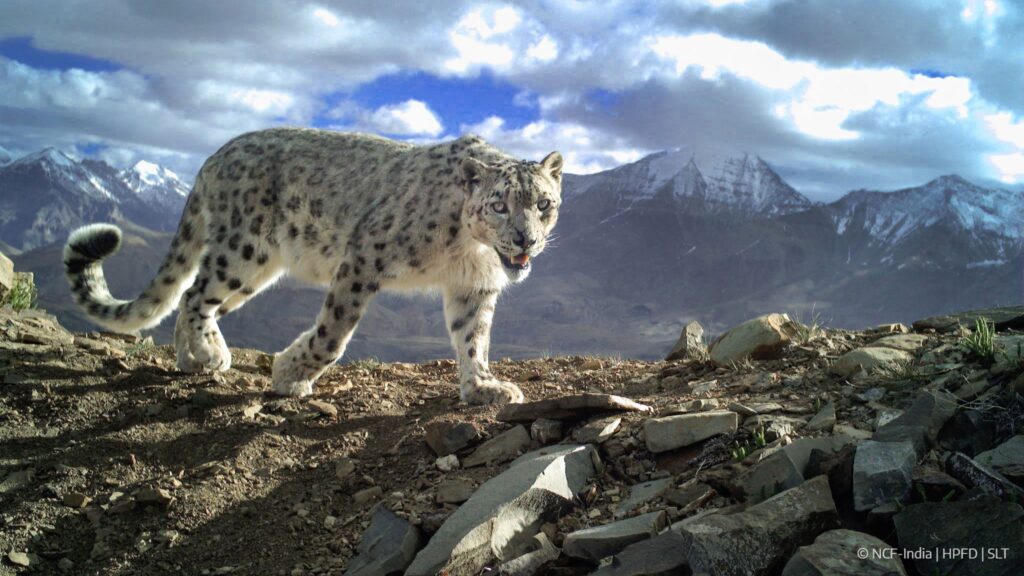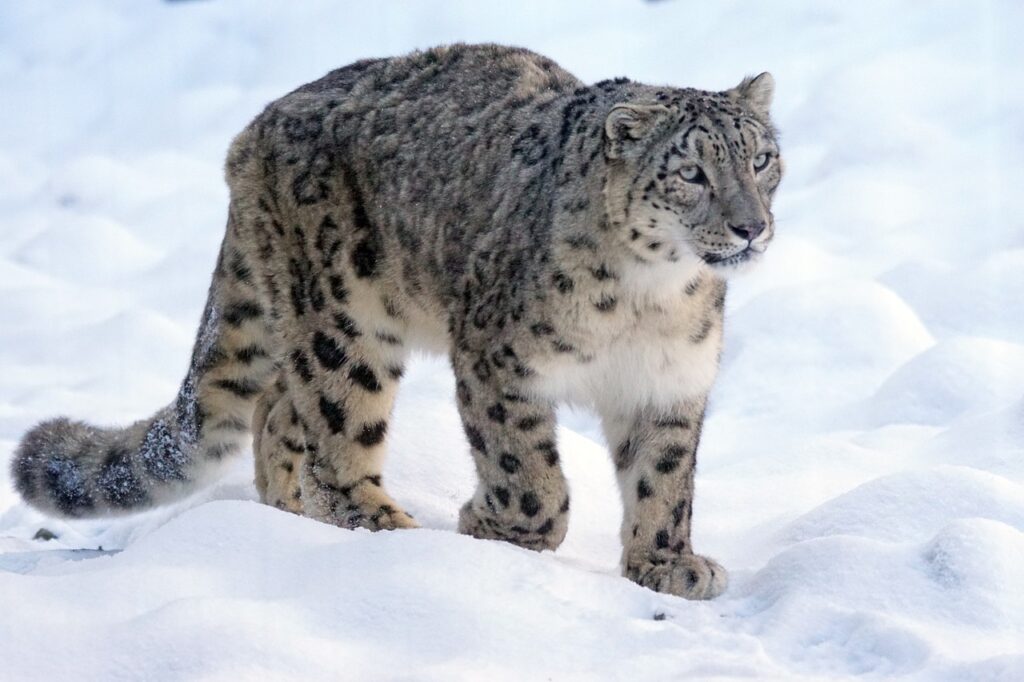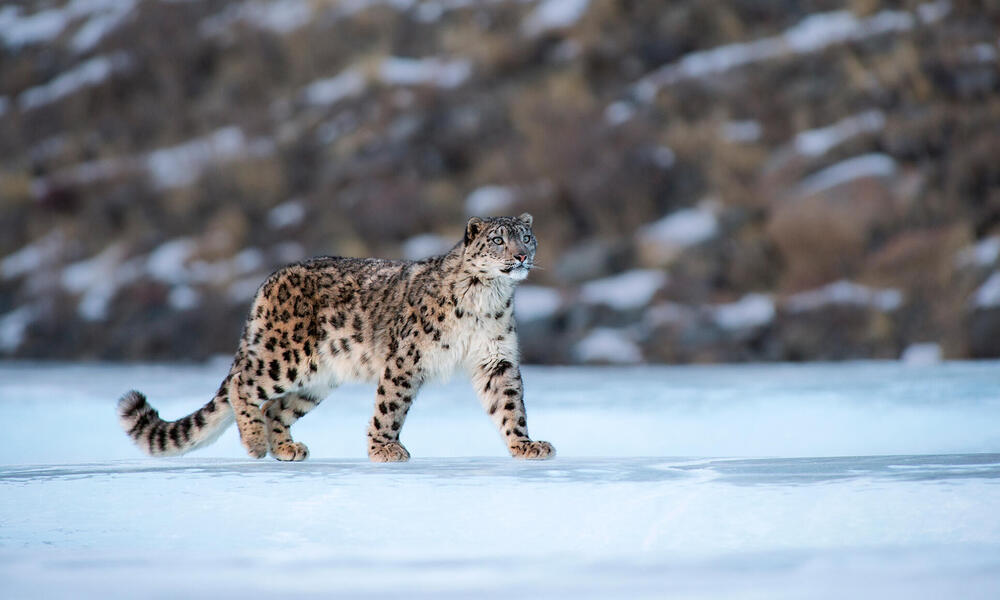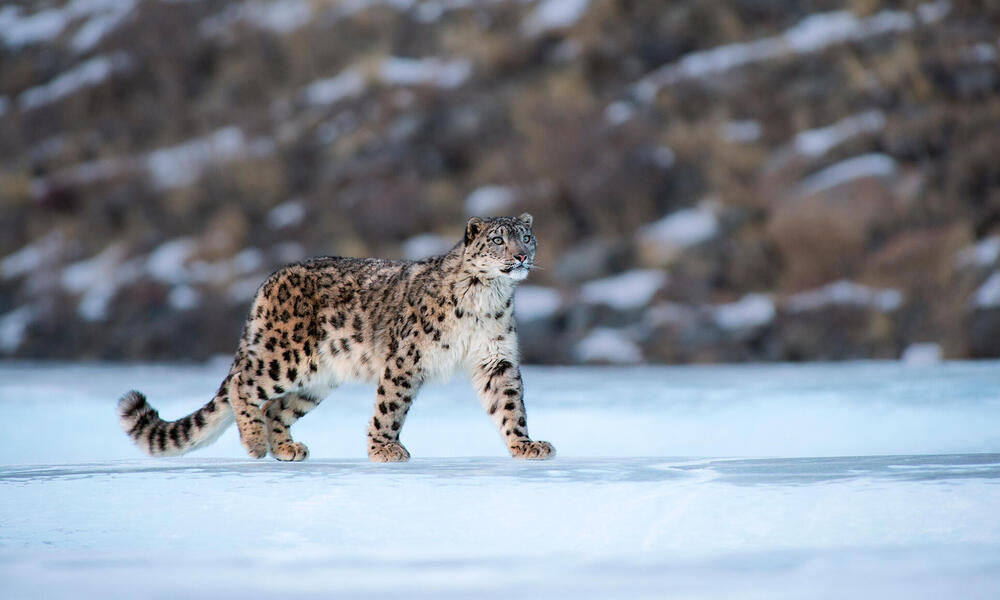A new assessment has revealed that Nepal is home to 397 snow leopards, a significant number given that the country contains only about 2% of the global snow leopard habitat. The data, released by WWF Nepal, highlights the country’s vital role in conserving this elusive and endangered species, which serves as an indicator of healthy, pristine Himalayan ecosystems.
According to the International Union for Conservation of Nature (IUCN), despite its small share of global habitat, Nepal holds 10% of the world’s snow leopard population. Snow leopards in Nepal are spread across approximately 30,500 square kilometers in the high Himalayan regions. The new population estimates were made using camera trap surveys, genetic analysis of scat samples, and other modern technologies across seven major study areas between 2015 and 2024.

Globally, snow leopards are estimated to number between 3,200 and 5,390, as per the U.S.-based Snow Leopard Trust. These majestic cats are distributed across 12 countries, including Nepal, China, India, Bhutan, Mongolia, Russia, and Central Asian nations like Kazakhstan and Kyrgyzstan. Country-wise estimates include 2,000–2,500 in China, 953 in Mongolia, 718 in India, and 134 in Bhutan, in addition to Nepal’s 397.
The study in Nepal was led by the Department of National Parks and Wildlife Conservation under the Ministry of Forests and Environment, with contributions from conservation organizations, researchers, and WWF Nepal. The technical team followed the Global Snow Leopard and Ecosystem Protection Program (GSLEP) guidelines and collaborated with individual scientists and NGOs.

However, the species faces significant threats. Nearly 60% of snow leopard habitat in Nepal lies outside protected areas, making it vulnerable to habitat fragmentation, human-wildlife conflict, poaching, and poisoning. Additional challenges include difficult terrain, lack of advanced monitoring equipment, limited skilled manpower, and insufficient funding.
Snow leopards, typically found between 540 and 5,000 meters above sea level, are listed as “Vulnerable” on the IUCN Red List. In Nepal, their numbers are higher in the western regions, with Dolpa district alone home to around 90 individuals. Their long tails help them maintain balance on steep terrain, and they are among the least studied of the big cat species globally.

The Nepali government has started a six-year Snow Leopard Conservation and Action Plan (2024–2030) to address these problems. The strategy seeks to, restore habitats and ecological corridors, reduce conflicts between humans and leopards by involving the community. bolster law enforcement to prevent poaching, and encourage collaboration on a regional and global level. The total budget for this plan is estimated at NPR 1.77 billion. About 35% of the budget is allocated to community-based conflict mitigation and 26% to managing wildlife crime.
The strategy emphasizes local community involvement, capacity building, and long-term partnerships to ensure snow leopards’ survival. Dr. Ghana Shyam Gurung, WWF Nepal’s Country Representative, described the release of the new data as a historic step in Nepal’s conservation journey. He emphasized that this updated knowledge base would not only guide future conservation policies but also serve as a foundation for long-term ecosystem protection in the Himalayas.






